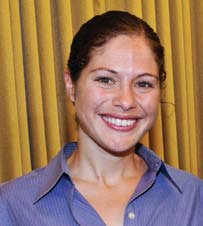
The billions of cells in our bodies have to work together and be in constant communication in order to sense and react to changes in their environment. They receive signals from other cells that tell them, for example, how much they need to grow, when to divide, and when to produce the proteins that carry out many of the tasks in the cell. “For all this to work, you need a specialized compartment in the cell where you can control the quality of every single protein the cell produces, package it correctly, and then send it on to its destination outside of the cell,” says Dr. Maya Schuldiner of the Weizmann Institute of Science’s Department of Molecular Genetics. She studies this specialized compartment, which is a structure known as the endoplasmic reticulum (ER). “I call it the cell’s shipping and packing department,” she says.
Conditions such as diabetes, heart disease, and immunological and neurological disorders can develop when the ER is not working correctly.
Dr. Schuldiner is fascinated with the ER, she explains, “because it has such an enormous responsibility.” One of her favorite examples of this is its role in nerve cells. In order for the brain to process information, nerve cells transmit messages to other nerve cells in the form of electrical signals. “The only reason those electrical signals can move through your brain is because of proteins on the cell surface that allow them to pass through,” says Dr. Schuldiner. “Those proteins are all made in the ER, which has to function non-stop in an optimal manner to produce enough of them.”
The ER also plays a key role in the function of B cells, a type of white blood cell that helps protect the body from bacterial infections. When a B cell encounters an antigen (a foreign substance, such as bacteria), it starts producing antibody proteins that bind to the antigen and help destroy it. To do this, the B cell must double in size to house the enormous amount of ER that is required for so many secreted proteins. “This allows the B cell to produce its own weight in antibodies every single day. It’s really spectacular that a cell can do this,” says Dr. Schuldiner.

All the cells in the body need to have a properly functioning ER in order to stay healthy. Conditions such as diabetes, heart disease, and immunological and neurological disorders can develop when the ER is not working correctly. For example, Dr. Schuldiner points out that if the ER does not function in your B cells, you can develop an immune deficiency because you’re not producing antibodies in the right way. And if the ER does not function in your pancreatic cells, they won’t be secreting insulin properly and you can become diabetic. “My hope is to understand how the ER—this very basic machinery that is essential for the function of every single cell type in our body—works during the normal life of a cell and during disease,” she says.
In order to investigate the ER, Dr. Schuldiner and her team utilize baker’s yeast (Saccharomyces cerevisiae). Yeast cells are similar to human cells but are easier to manipulate in the lab; however, their greatest appeal may be the fact that they divide very quickly, much more rapidly than human cells.
"My hope is to understand how the ER – this very basic machinery that is essential for the function of every single cell type in our body – works during the normal life of a cell and during disease."
When a human cell divides, it duplicates its contents and splits to form two genetically identical “daughter” cells. When a yeast cell divides, a bud emerges from the parent cell and then separates into a daughter cell. In both cases, the endoplasmic reticulum is inherited by the daughter cells.
Dr. Schuldiner and her team want to find out whether, and how, genetic alterations change the ability of a cell to pass on its ER to the daughter. “This is a question we couldn’t address before, because we didn’t have the right tools,” says Dr. Schuldiner. “But now we’re working with state-of-the-art robotic tools that allow us to do these experiments in a way that’s completely automated.” With this equipment, after labeling the ER with special fluorescent proteins, the researchers can take thousands of pictures of yeast cells each day, each with different genes altered, and under varying conditions.
Such access to high-tech instrumentation and other research support was one of the factors that drew Dr. Schuldiner to the Institute. Along with her husband, Dr. Oren Schuldiner of the Department of Molecular Cell Biology, she was recruited in 2008 as part of the Institute’s “Brain Gain,” a proactive initiative aimed at encouraging top young scientists to establish their research careers in Israel, and at Weizmann.
Every protein each cell produces must be high quality, correctly packaged, and sent to the right place – a task that is the ER's "enormous responsibility."
“The Weizmann Institute enables us to engage in world-class science—with the same equipment and under the same conditions as those available at the best universities in the world—without giving up our identities, without losing the possibility of raising our children as Israelis, and without having to miss our country,” she says. “I’ve been extremely lucky at the Institute to be able to mentor and work with an amazing group of young scientists in my lab,” she continues. “Thanks to them, I am sure that in the next years we will be able to change the way we see cells and how they function.”
Dr. Maya Schuldiner's research is supported by Minna James Heineman Stiftung; the J&R Foundation; Miel de Botton Aynsley, UK; James and Ilene Nathan, Beverly Hills, CA; the Estate of Lela London; the Enoch Foundation; and Roberto and Renata Ruhman, Brazil.
